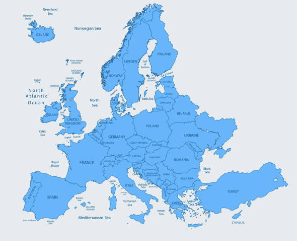Map:8nhyysgpyyo= Western Europe

The map “8nhyysgpyyo= Western Europe” serves as a comprehensive guide to the region’s geographical and cultural intricacies. By illustrating key features such as the imposing Alps and the historic Rhine River, it reveals how natural landscapes have influenced economic and social dynamics throughout history. Furthermore, the inclusion of significant landmarks invites exploration into the rich tapestry of Western European heritage. Yet, the question remains: how do these elements intertwine to shape contemporary perceptions of this historically rich area? Understanding this connection may offer deeper insights into the region’s ongoing evolution.
Overview of Western Europe
Western Europe is often perceived as a region characterized by a rich tapestry of history, culture, and economic development.
Its historical significance is underscored by pivotal events that shaped global ideologies.
Economic influences, including trade networks and industrial advancements, have fostered prosperity and innovation.
This dynamic interplay of history and economy continues to shape Western Europe’s identity and its role in a global context.
See also: Map:7m4tisnykes= New York New York
Key Geographical Features
The geographical landscape of Western Europe is marked by a diverse array of features that significantly influence its climate, population distribution, and economic activities.
Prominent mountain ranges, such as the Alps and the Pyrenees, shape regional weather patterns and serve as natural barriers.
Additionally, extensive river systems, including the Rhine and Seine, facilitate trade and connectivity, further impacting economic development across the region.
Cultural Landmarks to Explore
Numerous cultural landmarks across Western Europe provide profound insights into the region’s rich history and artistic heritage.
From the historical sites of ancient Rome to the architectural wonders of Gothic cathedrals in France, each landmark reflects the unique narratives of its time.
Exploring these sites fosters a deeper appreciation for the cultural evolution and diverse influences that have shaped Western European identity.
Travel Tips for Visitors
Navigating the complexities of travel in Western Europe requires careful planning and consideration to enhance the overall experience.
Familiarize yourself with local cuisine to indulge in authentic flavors, while exploring diverse culinary traditions.
Additionally, evaluate transportation options, such as trains and buses, to maximize mobility and access to attractions.
This strategic approach will facilitate a rewarding journey across the vibrant landscapes of Western Europe.
Conclusion
In summation, the map “8nhyysgpyyo= Western Europe” serves as an invaluable guide to the region’s multifaceted identity, encapsulating the harmonious blend of natural splendor and cultural heritage. By offering insights into significant geographical features and historic landmarks, this representation invites exploration of Western Europe’s enduring narratives. The interplay between the majestic Alps and the storied Rhine River, coupled with the richness of ancient sites, reveals a tapestry of experiences waiting to be discovered, enriching the understanding of this vibrant locale.




